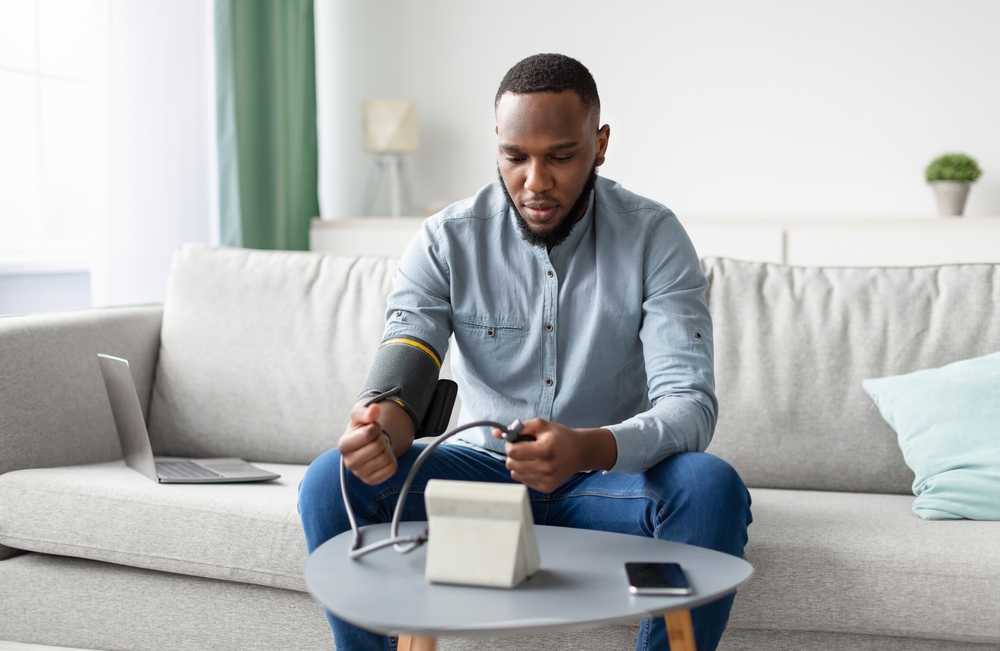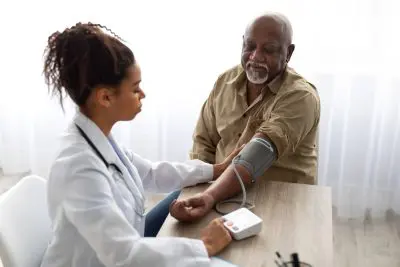In an era dominated by sophisticated health gadgets and wearable tech, one remarkably simple practice stands out for its lifesaving potential: keeping a daily log of your blood pressure readings. This understated approach, long recommended by cardiologists but often ignored by patients, deserves renewed attention as research confirms its remarkable effectiveness in preventing serious cardiovascular events.
The overlooked power of personal pressure records
For most people, blood pressure monitoring happens only during occasional medical appointments – a practice that medical research increasingly suggests is dangerously inadequate. These infrequent measurements provide just a momentary glimpse of a vital health marker that naturally fluctuates throughout each day.
Home monitoring with consistent record-keeping offers a dramatically more complete picture of cardiovascular health than those sporadic office readings. This comprehensive view allows for early detection of problems that might otherwise remain hidden until a crisis occurs.
Research published in the Journal of Hypertension found that individuals who maintained regular blood pressure logs experienced 30% fewer cardiovascular events compared to those who relied solely on occasional clinical measurements. This striking difference highlights how this simple habit could potentially save thousands of lives annually.
Capturing the daily rhythm of your heart
Blood pressure naturally rises and falls throughout the day, influenced by everything from stress levels and physical activity to meal consumption and sleep quality. What health providers see during a brief office visit represents just a single frame from the full movie of your cardiovascular health.
A properly maintained pressure log reveals crucial patterns that would otherwise remain invisible. Morning spikes might indicate a need for medication adjustment, while consistent elevations after certain foods could prompt specific dietary recommendations. Nighttime dips that fall too low or high readings during particular activities create a detailed map of your unique cardiovascular responses.
These patterns often reveal early warning signs of serious conditions long before they would be detected through conventional care. Research from the American Heart Association demonstrates that morning blood pressure surges, which can only be identified through home monitoring, significantly increase stroke risk – yet remain completely invisible during standard afternoon doctor appointments.
From passive patient to active partner
Perhaps the most profound benefit of blood pressure tracking extends beyond the numbers themselves. This practice fundamentally transforms the typical doctor-patient relationship from a passive, periodic check-in to an active, data-driven collaboration focused on prevention.
When patients arrive at appointments with detailed pressure logs, conversations shift from general recommendations to highly personalized strategies based on their specific patterns. This targeted approach allows for precision adjustments to treatment plans that would be impossible with limited in-office data.
Research published in the New England Journal of Medicine found that patients who brought blood pressure logs to appointments received more tailored medication adjustments and achieved better pressure control than those who didn’t track readings – ultimately reducing their heart attack risk by 28% over a five-year period.
Catching the silent killer before it strikes
High blood pressure earned its reputation as the “silent killer” because it typically causes no noticeable symptoms while progressively damaging vital organs. This absence of warning signs makes regular tracking particularly valuable as an early detection system.
Many patients with dangerously elevated blood pressure feel perfectly fine while their cardiovascular system sustains cumulative damage. By the time symptoms finally appear, significant harm to the heart, brain, kidneys and eyes has often already occurred.
Consistent home monitoring can reveal troubling trends long before serious complications develop. The American College of Cardiology reports that regular tracking helps identify hypertension an average of 2.1 years earlier than relying on clinical visits alone – providing a crucial window for intervention before permanent damage occurs.
The psychological benefits of self-monitoring
Beyond its physiological advantages, blood pressure tracking creates significant psychological benefits that further improve health outcomes. This simple practice often triggers a profound shift in how people think about and manage their health.
When individuals see the immediate impact of their choices on their blood pressure readings, abstract health advice becomes tangibly relevant. That extra salty meal no longer seems worth it when they observe their pressure climb 15 points afterward. Skipping daily walks shows up directly in their numbers, while stress-reduction practices demonstrate measurable benefits they can see for themselves.
This immediate feedback loop creates powerful motivation for positive change. Research in the Journal of Behavioral Medicine found that individuals who tracked blood pressure were 67% more likely to maintain heart-healthy behaviors compared to non-trackers, even after accounting for other motivational factors.
Creating a common language with health providers
A blood pressure log serves as a bridge between patients and medical professionals, establishing a shared foundation for more productive health discussions during limited appointment times.
Instead of trying to recall vague impressions or isolated incidents from the previous months, patients can present concrete data showing exactly how their body responds to medications, lifestyle factors, and various interventions. This specificity allows for truly informed discussions about treatment effectiveness rather than generalized recommendations.
Many cardiovascular specialists now report that patients who maintain detailed logs receive significantly different care than those who don’t. With comprehensive data in hand, providers can identify medication timing issues, recognize when certain approaches aren’t working, and customize treatment plans based on individual response patterns rather than population averages.
Overcoming the consistency challenge
Despite its clear benefits, maintaining a regular blood pressure monitoring routine presents challenges for many people. The key obstacles typically include remembering to take readings, using proper measurement techniques, and sustaining the practice over time.
Successful tracking begins with establishing a consistent routine. Morning measurements should happen before medications but after emptying the bladder, while seated quietly with the arm supported at heart level. Evening readings should occur under similar conditions. Following these protocols ensures results accurately reflect cardiovascular status rather than momentary influences.
Finding the right recording method also significantly impacts sustainability. While traditional paper logs work well for some, many find digital tracking tools more convenient for long-term use. The best approach varies based on individual preferences and technical comfort levels.
Technology as an ally in pressure monitoring
While blood pressure tracking itself represents a relatively low-tech approach to health management, modern technology offers valuable tools to make the practice more accessible and sustainable for everyday life.
Bluetooth-enabled blood pressure monitors can automatically transfer readings to smartphone apps that generate easy-to-understand graphs and trends reports. These applications often include reminder systems, medication tracking, and the ability to share results directly with healthcare providers between appointments.
For those with less technical inclination, simple innovations like color-coded paper logs with built-in storage for the monitor can significantly improve consistency. Even basic calendar alerts on a phone can serve as effective reminders for daily measurements.
The key principle remains making the process as frictionless as possible. Research consistently shows that the easier tracking becomes, the more likely people are to maintain it long-term and reap its substantial health benefits.
The future of pressure monitoring
As healthcare continues evolving toward more preventive and personalized approaches, blood pressure tracking appears positioned to play an increasingly central role in cardiovascular care strategies.
Medical systems increasingly recognize the value of patient-generated health data, with many now offering direct integration between home monitoring results and electronic health records. This connectivity allows doctors to spot concerning trends between appointments and potentially intervene before emergencies occur.
Some forward-thinking insurance programs have begun offering incentives for consistent blood pressure monitoring, recognizing its potential to prevent costly hospitalizations and complications. These programs typically provide free monitoring equipment and reduced premiums for participants who regularly track and share their readings.
The ideal monitoring schedule
While daily tracking provides the most comprehensive picture, research suggests that even less frequent monitoring offers significant benefits compared to relying solely on clinic measurements.
For those with confirmed hypertension, the American Heart Association recommends measuring blood pressure at least twice daily – ideally morning and evening – and recording all readings. Those with pre-hypertension benefit from checking 3-4 times weekly, while even individuals with normal pressure should consider monthly checks to catch any developing issues early.
The frequency may increase during medication adjustments or when addressing specific concerns. During these periods, more frequent measurements provide crucial feedback about treatment effectiveness.
A simple practice with profound impact
In an increasingly complicated healthcare landscape, the act of regularly measuring and recording blood pressure represents a refreshingly straightforward approach with disproportionately powerful benefits.
This practice gives individuals unprecedented insight into their cardiovascular health, transforms their relationship with healthcare providers, and often serves as the early warning system that prevents catastrophic health events. All this comes from a habit that requires just minutes per day and minimal equipment.
For those concerned about heart health, few interventions offer such significant returns on such a modest investment of time and effort. While flashier health technologies may capture more attention, this simple practice of tracking blood pressure readings remains among the most effective tools for protecting long-term cardiovascular health.
By bridging the gap between periodic medical appointments and daily life, blood pressure monitoring empowers individuals to take meaningful control of their health destiny – potentially adding years of quality life through nothing more complicated than a few minutes of attention each day.















